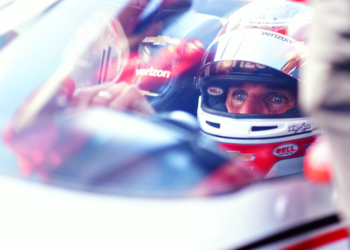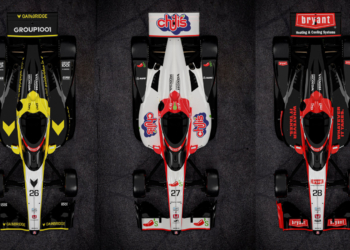Hosted as part of the annual CES electronics trade show in Las Vegas, the Indy Autonomous Challenge has completed its most adventurous competition to date around the Las Vegas Motor Speedway.
The IAC is a competition designed to advance the technology needed for fully autonomous vehicles, with the goal of improving safety and performance in motorsports on closed circuits, as well as consumer cars on public roads.
The cars themselves consist of a modified Indy Lights chassis built by Dallara that have been outfitted with numerous sensors in place of controls that would typically be operated by a human driver.
Lidar, radar, GPS, and optical cameras are all outfitted to each identically-built car, and the software that uses those sensors and runs on the onboard computers is written by nine university-led teams with members from eight countries.
Juncos Hollinger Racing, which will be competing in IndyCar for the full 2022 season, is responsible for assembling and maintaining the fleet of unique vehicles that can top $1 million after all the technology is added.
The software that drives each car is designed to be fully autonomous, reacting to the car’s environment and situation on its own. The cars are not allowed to be remotely controlled from the pit lane aside from a target speed sent to the car.

During the early afternoon time trial session, each car lapped the 1.5-mile track as fast as possible with the best cars running over 170 mph.
Then the competitors entered the second phase of the challenge, where two cars took to the track simultaneously and were tasked with passing each other at progressively faster speeds.
The on-track passes were the first completed by autonomous vehicles on a high-speed race track, marking a significant moment in the emerging technology.
There were some hiccups as the prototype software struggled to adapt to all situations of the day, and one car ended up colliding with the barriers despite most of the competition proceeding without a hitch.
Ultimately, Team PoliMove beat out TUM Autonomous Motorsport in the final round, with the latter losing control and spinning through the infield after being passed while travelling over 150 mph.
As a reward for the achievement, the students from Politecnico di Milano and the University of Alabama were able to take home the sizeable $150,000 grand prize.
A timeline for future competitions has not been announced, but the IAC plans to continue to host events to help push autonomous driving technology to new limits.









I’ll root for the old, fat carbon Chip, but never for the new silicon chip.